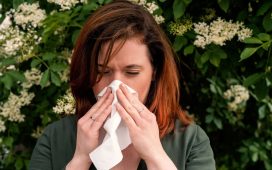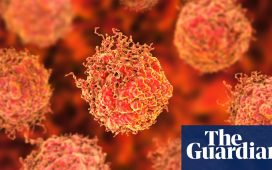As apocalyptic horror stories go, it’s up there with the scariest. Yet it’s not fiction writers but top scientists who are warning of how the world could look once superbugs develop resistance to the remaining drugs against them in our hospital pharmacies. Patients will die who can currently be cured; routine surgery will become dangerous or impossible. Antimicrobial resistance (AMR) – it happens not only with bacteria but also viruses, fungi and parasites – is one of the top global public health threats facing humanity, says the World Health Organization (WHO). It kills 1.3 million people and contributes to 5 million deaths every year, predicted to be 10 million by 2050. In addition to the appalling human toll, it will increase the strain on and costs of health services. But is it high enough up the agenda? Covid-19 knocked it off, and the climate crisis gets more attention. AMR does not so often get top billing.
This week efforts have been made to change that, with talks at the UN triggering wider coverage chronicling the sorry plight we are in. From the pharmaceutical industry to the WHO to NHS England, the same tune is being played: we are not doing enough to avert disaster.
Dame Sally Davies, England’s former chief medical officer and now the UK’s special envoy on AMR, told the Guardian that resistance could make the Covid pandemic “look minor”. Tragically, her goddaughter, recipient of a double lung transplant because of cystic fibrosis, died at the age of 38 of an antibiotic-resistant infection. Low- and middle-income countries will be worst hit. But those who think this is a developing world problem should think again.
This is a multi‑faceted issue. There is no quick fix. Antibiotics are still being too widely and wrongly used. They don’t work against viruses causing coughs and, if you are prescribed them, it’s vital to finish the course or a resistant strain of bacteria may develop. Staggering amounts – two-thirds of all antibiotics – are used in farming, to keep animals healthy. While responsible individuals must do their part, it is clear that concerted intergovernmental action is needed on all fronts.
We must cherish the antibiotics we have, using them sparingly. And we badly need more. Only 10 new antibiotics have been approved between 2017 and 2023, according to the international pharmaceutical trade body, only two of which are considered innovative by WHO and none is a new class of antibiotic. In January, US scientists said they had found a molecule that worked in a new way against one of three highly drug-resistant bacteria considered to pose the greatest threat to human health – but so far the drug has been tested only on mice.
Hopefully it will get further, but the companies are in business to make money. New antibiotics are hoarded away against the day the old ones don’t work. So there isn’t a lucrative market. The economist Jim O’Neill proposed a prize fund to pay drug companies for developing new antibiotics. The NHS has piloted the very thing, rewarding two companies with lump sums of £10m a year rather than paying for packets of pills ordered. Other countries including Japan and the US are exploring the idea. More must join in and pull pharma in the direction we need it to go.
This week’s flurry of interest is the prelude to a UN general assembly meeting on AMR in September, which is intended to persuade governments all over the world to make more effort. Whatever else may happen in the meantime – from wars to pandemics – nothing must be allowed to distract them from committing to a new and determined focus on one of the most critical issues of our time.











